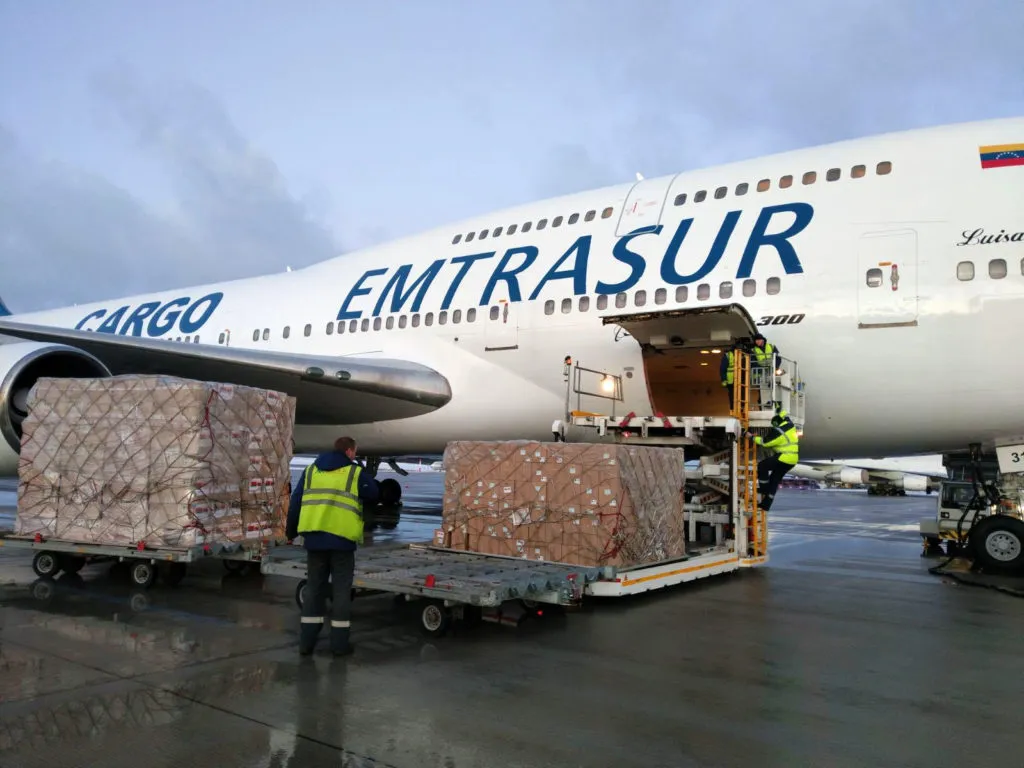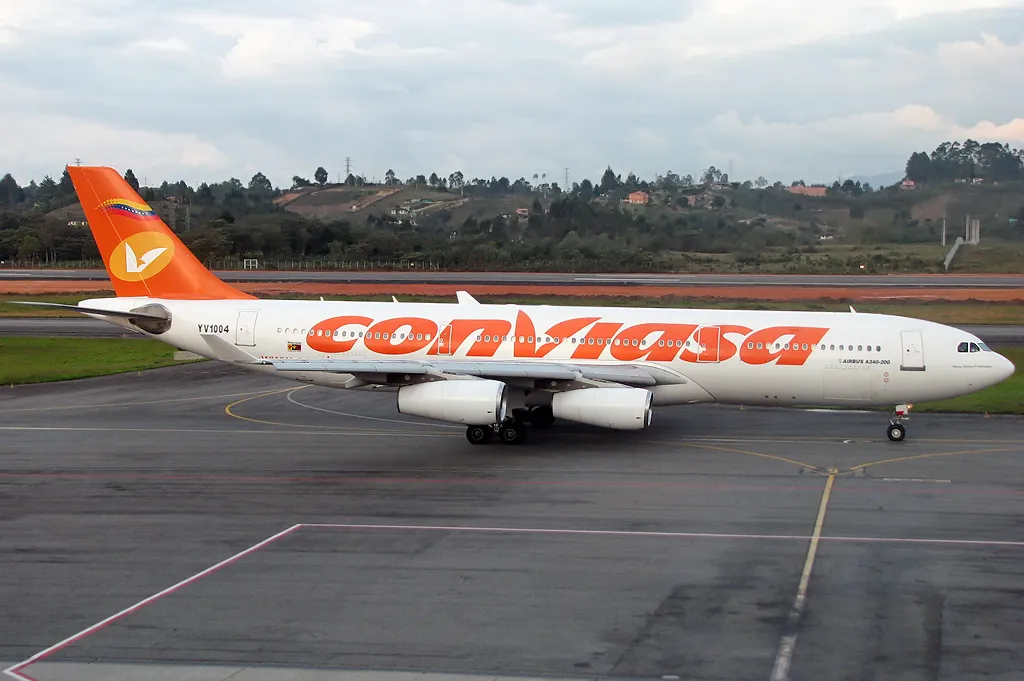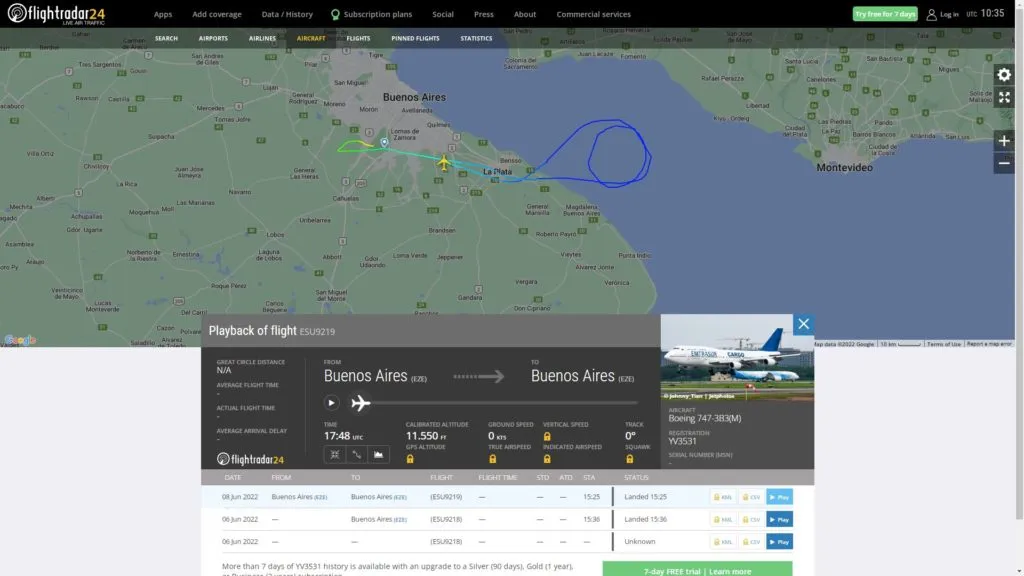The Saga of the Emtrasur Boeing 747 Detained in Argentina
This is why a Boeing 747-300 freighter has remained grounded at Ezeiza International Airport (EZE) in Buenos Aires, Argentina.

This is why a Boeing 747-300 freighter has remained grounded at Ezeiza International Airport (EZE) in Buenos Aires, Argentina.

DALLAS - A Boeing 747-300 freighter has remained grounded at Ezeiza International Airport (EZE) in Buenos Aires, Argentina.
The airliner, which belongs to Venezuelan airline EMTRASUR, is at the center of a controversy that has gained traction as local authorities claim inconsistencies in the number of crew members on board.
EMTRASUR is a subsidiary of the Venezuelan state-owned Conviasa (V0), the country’s flag carrier. The new startup company was established in November 2020, and its purpose is to “plan, manage, and control air cargo and mail operations and activities, both domestically and internationally.”
As part of a deal signed last year between Conviasa (V0) and Mahan Air (W5), the Venezuelan airline took delivery of part of W5’s fleet, including two Airbus A340-600s already delivered to V0, an A340-500, also for the Venezuelan airline, and a Boeing 747-300(M), which was allocated to EMTRASUR to serve V0's cargo and logistic services.

The Boeing 747-300 (M) was transferred from W5 to V0 in January 2022 after undergoing maintenance in Iran, where it also received its livery—large EMTRASUR cargo titles over a white fuselage and a blue tail without any logo. The aircraft (YV3531, MSN 23413, LN 632) was initially delivered to French carrier UTA (UT) in 1986, subsequently transferred to Air France (AF) in 1992, and then sold to W5 in 2007.
The aircraft is a 747-300 Combi. This means that it can be used to carry passengers as an airliner or cargo as a freighter, and it may have a partition in the aircraft cabin to allow both uses simultaneously in a mixed passenger/freight combination, hence its name.
Boeing has built 1570 Boeing 747s since 1969. Of these, just 81 -300 series were produced, and today, there are just two examples of the type in flying condition, including the one in this story.

The Boeing 747-300 (M) requires only five crew members (pilot, co-pilot, navigator, and two crew members for the cargo area). However, the type arrived at EZE with 19 passengers on board, which puzzled the Argentine authorities at the time.
When analyzing the names, inconsistencies began to appear. Although the plane had a Venezuelan registration, its pilots were Iranian, which aroused suspicion as to who was operating the jumbo aircraft.
However, given the rarity of the aircraft and the lack of simulators to train and validate the pilot’s type rating, it is common practice for flight instructors with the experience and type rating to train and validate new crews, and it is also common practice that these sessions take place during planned flights, either scheduled or non-scheduled.
As Emtrasur had recently taken delivery of the Boeing 747, it did not have any Venezuelan pilots rated to fly the new aircraft.
Therefore, the startup cargo airline hired Iranian flight instructors to train the Venezuelan pilots during the normal operations of the airline, which so far have been just a handful of flights due to the lack of rated pilots.

A Mexican cargo company hired the services of EMTRASUR to transport a batch of automotive parts from Mexico to Argentina on June 8, 2022. The aircraft left Mexico, stopped in Caracas for refueling, and continued to Buenos Aires. The weather conditions were not optimal there, and the aircraft diverted to Cordoba (COR) for a few hours.
After weather conditions improved in Ezeiza, the 747 landed without inconvenience and was unloaded. According to local authorities, the waybill did not show any inconsistencies, but given the large number of crewmen on board (19 people), local authorities raised their concerns.
The logic behind having many crewmen aboard could easily be explained by the fact that Emtrasur might have trained its pilots en route using Iranian flight instructors.
Ezeiza International refused to refuel the aircraft, so once the cargo was unloaded, it departed Ezeiza bound for Montevideo (MVD) for refueling before continuing to Caracas.
However, Uruguayan authorities impeded the aircraft from entering the country’s airspace after receiving alerts from "foreign agencies," forcing its return to Ezeiza, where it was detained, citing the “excessive” number of crew on board, including Iranian nationals.
Argentina-Iran relations were strained after the bombings of the Israeli embassy in Buenos Aires in 1992 and the Asociación Mutual Israelita Argentina (AMIA) in 1994, also in Buenos Aires. Since then, the Argentine government has accused Iran and its proxies of attacks on its territory.

The aircraft sits idle at EZE, as no company has yet provided the EMTRASUR Boeing 747-300(M) with fuel or assistance. Some speculate that these companies fear they could face sanctions from the US due to the type's apparent links to Iran and its former operator, W5, even though American laws have no jurisdiction outside the US.
As for the Venezuelan crew members, they will get their passports back, and they are free to "board an airliner and leave without any inconvenience," according to Minister Fernandez.
However, according to the BBC, Federal Judge Federico Villena ordered that the passports of the five Iranians be kept under custody for 72 more hours on Monday. That same day, federal prosecutor Cecilia Incardona requested a further investigation of the Iranian crew members.
Today, Argentine anti-terrorist officials raided the hotel rooms where the Iranian nationals were staying in Buenos Aires. According dni.gov, Iran views terrorism as a tool to deter and counter its perceived foes, assert leadership over Shia Muslims worldwide, and project power in the Middle East. Iran and Venezuela maintain a strategic partnership characterized by close political, economic, and military ties.
This is a developing story.
Featured image: Photo: Venezuelan Embassy, Belarus, via Twitter.
.webp)
David H. Stringer, the History Editor for AIRWAYS Magazine, has chronicled the story of the commercial aviation industry with his airline history articles that have appeared in AIRWAYS over two decades. Here, for the first time, is a compilation of those articles.
Subjects A through C are presented in this first of three volumes. Covering topics such as the airlines of Alaska at the time of statehood and Canada's regional airlines of the 1960s, the individual histories of such carriers as Allegheny, American, Braniff, and Continental are also included in Volume One. Get your copy today!